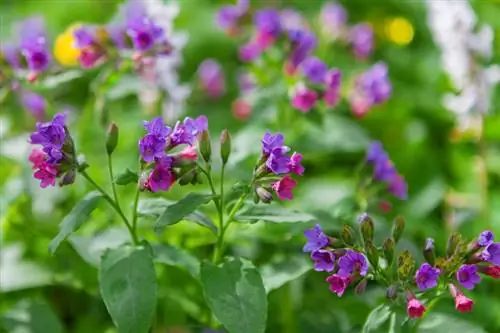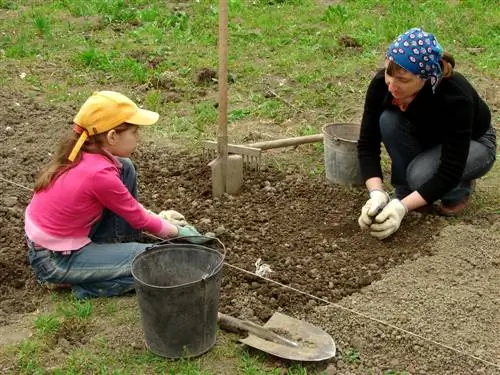- Author admin [email protected].
- Public 2023-12-16 16:46.
- Last modified 2025-01-23 11:20.
When it comes to periwinkles, there are basically two species that grow at different heights, the small periwinkle (Vinca minor) and the large periwinkle (Vinca major), which is also poisonous. Both variants are similar in their care needs, but have slightly different location preferences.

How do you care for periwinkle?
Periwinkle care includes sparing watering, occasional pruning, protection against Phoma stem rot, avoiding artificial fertilizers and covering with leaf mulch or fleece in winter. The evergreen is hardy, robust and easy to care for.
How often does the periwinkle need to be watered?
You can enrich very sandy soil in your garden with a little peat so that watering the evergreen is largely unnecessary. Because the ground is shaded and the plants are often planted in the shade, watering is rarely necessary for evergreens. Watering should only be carried out occasionally depending on the location and during long dry periods.
When is the best time to transplant evergreens?
The best time for transplanting evergreens is spring. Then there is still enough time before autumn for growth and for pruning, which stimulates stronger branching.
When and how is the periwinkle cut?
Basically, you don't necessarily have to cut the periwinkle as part of care or rejuvenation. However, you can cut it back heavily from above in the spring if it has become too tall for you. However, leave enough branches and shoot buds close to the ground. You can remove lateral outgrowths at any time, even at other times, if the evergreen grows beyond its planned location in one place.
Which diseases and pests can be dangerous to periwinkles?
Basically, most evergreen varieties are very robust and are also spurned by slugs. However, a disease called Phoma stem rot of the plant, which is often used as a ground cover, can lead to the total loss of entire crops. Black “nests” should be removed from the population and destroyed. Homemade sprays made from onions and garlic are said to help against this fungus.
Does the periwinkle need to be fertilized?
Artificial fertilizer is generally not absolutely necessary to supply evergreens with nutrients. In rainy years, however, nutrients can be heavily washed out of the soil. Then, for example, the following materials should be incorporated into the top layer of soil around the evergreen plants:
- Leaf mulch
- seasoned garden compost
- Hardwood chipping material
How do you get the periwinkle through the winter?
The subspecies of Vinca minor are generally hardy even in colder locations than the large-leaved Vinca major. However, all periwinkle species in this country can usually be overwintered outdoors without any major problems.
Tip
So that the evergreen gets through the cold season well even in winters with little snow, covering it with leaf mulch or a special fleece (€72.00 on Amazon) can be a good protection against frost.






